Remote working, digital de-manning, drones and robotics — all of these themes will structurally accelerate in the aftermath of the COVID crisis. Our research outlines their economics and how they can accelerate the energy transition. But this short note considers the safety consequences. They are as significant as COVID itself. And equally worthy of re-casting behaviours, policies and investments.
At the time of writing, the United States has been hardest hit by the COVID crisis out of any country in the world. It has incurred c35,000 fatalities. However, in the past five years, the US has also incurred an average of 35,000 fatalities on its roads each year (below). This is c100 deaths per day. 1 out of every 10,000 people is killed on US roads each year. There are 1.2 death for every 100M vehicle miles driven (and 3.2 trn miles are driven each year).
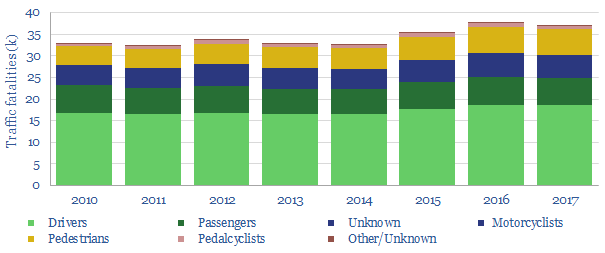
Likewise, at the time of writing, the US has been hit by 700,000 COVID cases. For comparison, there are 2.6M injuries on US roads each year, and 6.3M traffic accidents. This means 1 out of every 125 people is injured on US roads each year. There are 83 injuries for every 100M vehicle miles driven.
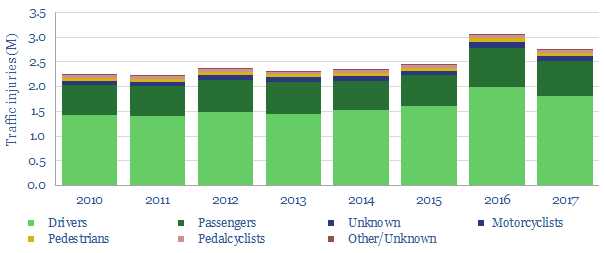
If you believe in working from home to save lives amidst the coronavirus crisis, a similar argument may justify working from home, where possible.
In addition, 5,250 US workers were killed in workplace fatalities in the most recent annual data, equivalent to 1 out of every c30,000 full-time employees. 40% of these deaths occur on roads. Of all the major job categories shown below, the most dangerous is trucking, where 1 out of every 4,000 full-time employees is killed each year.
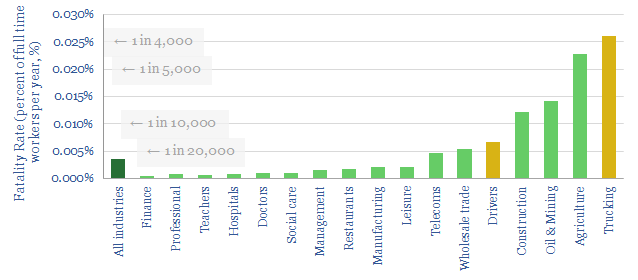
Looking more granularly, COVID has so far killed 1 out of every 10,000 people in the United States. However, fatality rates range from 1 in 10,000 to 1 in 1,000 for workers in some of the more physically intensive industries (as shown below), which comprise 10% of all the hours worked around the US economy.
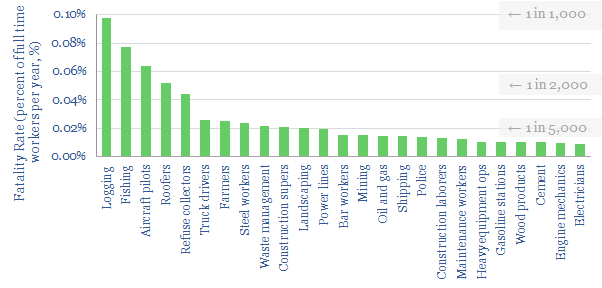
Workplace injury rates are 3% across the entire US economy. This is also 10x higher than the number of documented COVID cases so far in the United States.
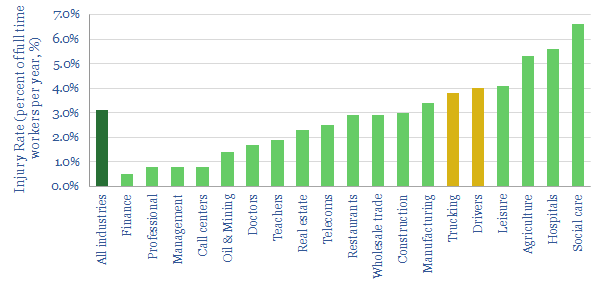
If you believe in using technology to save lives amidst the coronavirus crisis, a similar argument may justifying greater deployment of autonomous technologies, digital de-manning, drones and droids, across the broader US labor market.
Our research finds that 48% of recent digitization initiatives have materially improved safety (chart below). 60% also materially lowered costs, 55% materially increased output and 24% materially lowered CO2 emissions.
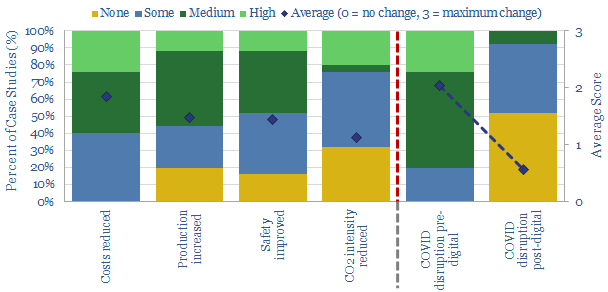
To recycle an example from the note, there is no need for a worker to be placed into harm’s way — climbing a scaffold to inspect a roof or lowered on a harness to inspect the undersides of an oil platform — as remote monitoring, drone and robotics technologies become available. This is why we have recently screened which operators are among the technology leaders, including in digital technologies (chart below).
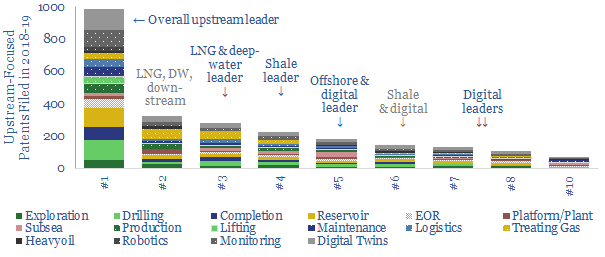
The importance of remote work, digitization technologies and robotics may sound obvious when framed in the terms above. But they are not being deployed sufficiently. The chart below shows the number of road fatalities in the US, declining at a 3.4% CAGR since 1920. But there has been no progress in the past ten years since 2009. The absolute count of road fatalities in the latest data is no better than in 1960 (below).
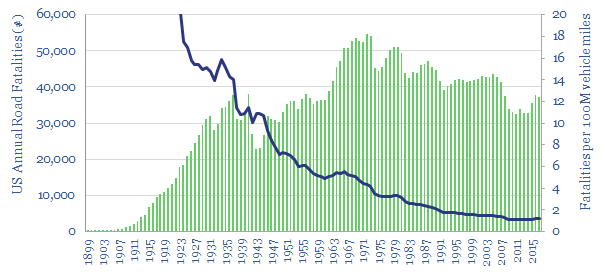
Likewise, workplace fatality rates deflated at 3% pa since 1992, but they have also since stalled. No net improvement has occurred since 2009.
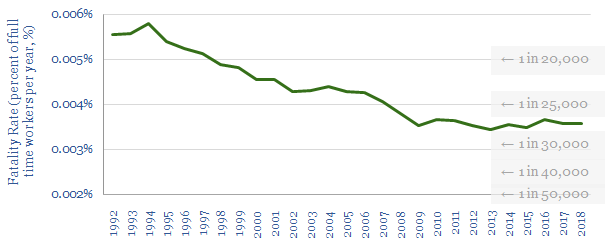
Safety matters, during the COVID-crisis, and after the COVID crisis. Remote and digital technologies can play an enormous role, if enabled by policies and embraced by forward-thinking companies. Please contact us if we can help you screen opportunities. And sorry for the morbid tone of this short note.
